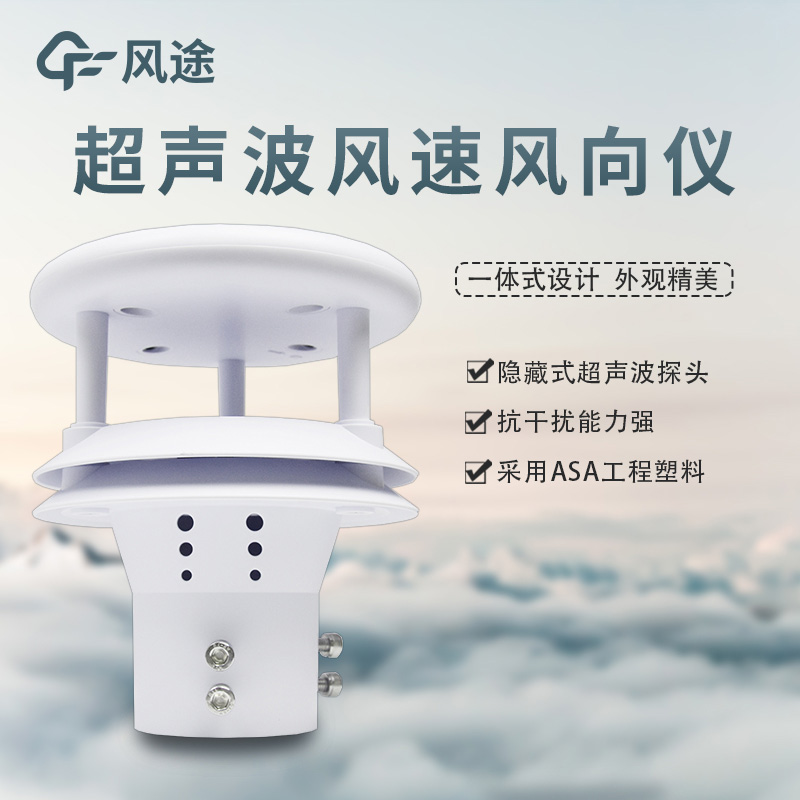Shandong Fengtu IOT Technology Co., Ltd
Sales Manager:Ms. Emily Wang
Cel,Whatsapp,Wechat:+86 15898932201
Email:info@fengtutec.com
Add:No. 155 Optoelectronic Industry Accelerator, Gaoxin District, Weifang, Shandong, China

Sales Manager:Ms. Emily Wang
Cel,Whatsapp,Wechat:+86 15898932201
Email:info@fengtutec.com
Add:No. 155 Optoelectronic Industry Accelerator, Gaoxin District, Weifang, Shandong, China
time:2024-09-02 13:02:34 source:Weather Station viewed:260 time
Traditionally, wind speed and direction measurements have relied on mechanical anemometers, but with the development of ultrasonic technology, people have begun to explore its application in wind speed measurements.The Ultrasonic Anemometer utilizes the properties of ultrasonic waves propagating through the air, demonstrating a faster response time and higher measurement accuracy. Therefore, the Ultrasonic Anemometer has been widely used as a wind measurement tool in meteorological monitoring and related fields.
The method determines the wind speed based on the change of ultrasonic propagation speed in the air: the speed of sound increases in a tailwind, slows down in a headwind, and is the same in the absence of wind. The instrument is usually equipped with four ultrasonic probes that both transmit and receive sound waves and work in pairs to measure relative wind speed. By analyzing the data from both sets of probes together, the wind speed and direction can be accurately determined.
The main difference between ultrasonic wind measurement and traditional mechanical wind measurement is the measurement principle and structural design:
Mechanical wind sensors rely on the physical rotation of a wind cup or vane to sense wind speed and direction, which is then converted into an electrical signal for measurement.
The Ultrasonic Anemometer, on the other hand, uses the ultrasonic time difference method to determine wind speed and direction by measuring the difference in the time it takes for ultrasonic waves to propagate through the air upwind and against the wind. With no mechanical parts, the Ultrasonic Anemometer avoids mechanical wear and tear and the effects of inertia, thus reducing maintenance requirements and improving measurement accuracy and response time.

The fully automatic mini weather station for agriculture is able to monitor the weather elements in real time, mainly: temperature, humidity, wind speed, wind direction, rainfall, air pressure and radiation. By monitoring these elements, the station is able to provide reference data for agricultural...
Small weather station configuration listWindway Technology is the source manufacturer of small weather stations, whose configuration list is shown below.Miniature weather sensorSolar panelIP66 protective box (with LCD screen inside)2m vertical poleGround cageCloud platformUpper computer, Android APP...
Fengtu specializes in the research, development, and production of environmental online monitoring equipment. Its FT-WQX2 Ultrasonic Wind Speed Direction Sensor has been recognized by the market in the field of meteorological monitoring.This device is capable of continuously monitoring outdoor meteo...
Air quality sensors are used to detect airborne pollutants such as the familiar PM10 and PM2.5 particulate matter. These particles can affect our health, especially PM2.5 because it is very fine and can penetrate deep into the lungs. The Air Quality Index (AQI) uses the concentration of these partic...